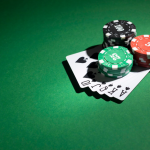With almost 400 years of history and a solid reputation for fairness, blackjack is one of the most popular casino games in the world. Blackjack has almost the same rules for the player and the dealer, which dramatically lowers the house edge compared to many other casino games.
The game is also very strategic, and you can boost your skills and win more over time by putting in some effort and practice. Numerous books have been created explaining every possible blackjack combination and the best course of action for each one.
To help you stay on track and improve your chances of winning, we’ve compiled a list of the top 15 blackjack strategies that you should be aware of and follow.
Maximise Your Winnings: Always Double Down on Hard 11!
There are a few variations of blackjack, and when answering the question of whether you should always double down on hard 11, we need to consider these variations.
In standard blackjack, the dealer has two cards: one face-up and one face-down. Alternatively, with no hole card blackjack, the dealer will have one card and will take the second one after all players make their decisions.
On a table where the dealer has two cards, if the upcard is 10 or an ace, after offering insurance, they will check to see if they have blackjack before moving on to player decisions. If you have 11 at this point and the dealer confirms they don’t have blackjack, you should always double down on 11 against any dealer card.
On a table where the dealer has only one card, and that card is a ten or an ace, there’s still a possibility we will see a blackjack because the dealer’s second card will come after players make their decisions.
If the dealer has a card showing 10, they have a one in 13 chance to pull a blackjack. That’s a 7.5% possibility. This is a risk we can afford to take.
In situations where the dealer shows an ace, the probability has now increased to one in 3.25, and that’s more than 30%. Do we want to put twice as much money on the table when there’s a 30% chance of losing? Of course not.
In conclusion, you should always double down on 11 unless the dealer has an ace and no hole card.
Smart Moves: Always Split 8s and Aces!
You should always split eights and aces in blackjack, and this should be pretty easy to remember if you know that eights and aces are known as a ‘Dead Man’s Hand’ in poker.
The reasons for always splitting aces should be pretty self-evident. Having two aces as a starting hand is two or 12, and by splitting, you end up with two powerhouse hands of 11, which will end up being a 20 or 21 around 38% of the time.
With the eights, it may seem risky to split them against 9, 10, or A because the dealer is very likely to make a high total with those upcards. Splitting in this situation is defensive, which means losing you less money in the long run. You’re splitting because 16 is the worst starting hand in blackjack.
That’s why you should always split eights and aces in blackjack.
Avoid This Mistake: Never Split 5s or 10s!
If you’re dealt a pair of fives in blackjack, remember that we treat this as a hard 10, and you should never split this hand. Having ten is one of the best starting hands in blackjack. If you split, it weakens your hand. You can even double down on this hand if the dealer has an upcard from two to nine.
If you’re dealt 10s, you should also never split them. Why? Because you never split a winning hand. Twenty will win 90% of the time, so you don’t want to split it. If you do decide to split, you’ll most likely get a five or six, and you’ll end up playing catch-up to your original 20.
You should always use this potentially winning hand that strengthens you against the dealer.
Winning Tactic: Hit Hard 12 Against Dealer’s 2 or 3!
Having a hard 12 as a starting point is one of the trickiest hands to play. Many blackjack players will choose to stand in this position, hoping that the dealer will bust. But this strategy carries a risk.
At this point, the dealer has a 35% chance of busting. That still gives a 65% chance that the dealer won’t bust and will finish with a stronger hand than your hard 12. By standing on 12, you’re practically betting that the dealer will bust, but that’s not the case most of the time.
Hitting on 12 can improve your chances of winning, especially when the dealer shows two or three. At this position, you have an 8/13 chance, which is around 61.5%, to draw two to nine. Drawing 10s has a 4/13 chance.
Standing at hard 12 will put you in a vulnerable position, while hitting gives you a good chance to make a stronger hand than the dealer.
Boost Your Odds: Hit Soft 18 Against Strong Dealer Cards!
Soft 18 is the most misplayed of all blackjack hands. You may think that you have an advantage over the dealer’s 9, 10, or ace, but actually, you will put yourself in a risky position by standing.
Against a 9, standing on 18 puts you at an 18% disadvantage, but hitting reduces that to 9.8%. While most cards won’t help you, the chance to improve is better than standing, as five out of 13 cards will beat you automatically if you don’t try to improve.
Against a 10 (assuming the dealer doesn’t have blackjack), standing puts you at a 17.95% disadvantage, but hitting drops it to 14.29%. With five out of 12 cards likely beating your 18, you’re better off trying to improve your hand.
Against an ace, after eliminating the chance of dealer blackjack, standing leaves you at a 10% disadvantage, while hitting reduces it to 9.53%. With fewer cards that outright beat your 18, improving is statistically better, even though your hand isn’t favoured.
Double Down for Bigger Wins When Dealer Shows 9 or Less!
Doubling down is a thrilling move to pull off in a game of blackjack. It’s a way to make twice as much profit without much effort.
A hard 10 puts you in a powerful position. If a dealer shows nine or less, you should double down. The basic concept is that you’re likely to draw a third card worth 10 points, while the dealer will be forced to draw until their hand totals at least 17.
Key Moves to Remember: Strategies for When Dealer Hits Soft 17!
On some tables, the dealer must stand on a soft 17, while on others, the dealer may hit on a soft 17. If a dealer hits on soft 17, it increases their chance of busting. But it also slightly increases the chances of improving their hand.
What smart steps can you take when the dealer hits on S17?
If you have a hand of 9, it’s always smart to double down, which puts you in a favourable position while the dealer’s chances of hitting closer to 21 are 4/13. This also applies if you have 10 or 11, as you’ll have an advantage over the dealer’s potential weakness.
Regardless of the dealer’s upcard, you should always split eights and aces when the dealer hits on soft 17. By splitting, you can improve your hand’s potential and odds of winning.
Take Advantage: Double Down on A-2 to A-7 Against Dealer’s 5 or 6!
You can play more aggressively and double down when the dealer has a five or six and you have a soft 13 to soft 18 (A-2 to A-7). The dealer is in a fragile position; thus, doing this will increase your chances of getting a winning hand.
For instance, if the dealer has five or six and you hit and get a 10 while holding an ace and a seven, you will have a hand of 18. This hand puts you in a better position.
Optimal Play: Stand on 9s When the Dealer Shows a 7!
As a hand of 18 is solid enough but not guaranteed, it is advised to stand when you have a pair of nines and the dealer has a seven.
To better understand this, consider the following scenario: if the dealer has seven and hits 10, you will win because you have a hand of 18. The worst-case scenario is if the dealer receives an ace, which results in a push.
Save Your Chips: Surrender Hard 16 Against Dealer’s Strong Cards!
A hard 16 (without an ace in a combination) is the worst hand you can receive in blackjack. You’re in an especially tough spot if the dealer has a strong hand of 10 or 11.
If you hit on this hand, in 60% of cases, you’ll go bust. Standing is also not a good decision because it increases the dealer’s chances of making a better hand than yours.
The best you can do is surrender and recover half of your bet.
Single-Deck Strategy: Double Down on 8 Against Dealer’s 5 or 6!
In a single-deck game, when the dealer has a five or six, consider it a moment for doubling down if you have an eight. In this position, the dealer must hit until they reach at least 17, which increases their chances of going over 21.
When you hold a 5-3 or 4-4 hand, you have better odds of improving your hand, so doubling down on this hand is a smart move.
Best Move: Split 2s or 3s Against Dealer’s 2 or 3 If DAS is Allowed!
If you have double twos or threes, the player’s role is to split the cards if DAS (Doubling After Split) is allowed. Splitting twos or threes when the dealer has a weak hand of two or three is a smart move that will increase your chances of hitting 10 or 11.
When the dealer’s upcard is a two or three, they have a higher chance of ending up with a weak hand. Splitting twos and threes serves multiple purposes: it gives you a chance to draw a strong card and to successfully double-down after the split.
Avoid the Trap: Never Take the Insurance Bet!
In some blackjack variants, you can take an insurance bet as a side bet. This protects you when a dealer gets a blackjack, and is usually taken when the dealer’s upcard is an ace.
But this bet is generally a losing proposition for a player.
Taking the insurance bet will probably end up costing you more in the long term than not placing it. You will lose both your wager and insurance bet even if the dealer has a natural blackjack. If you are sure that the dealer holds a blackjack, then you may only place an insurance bet. The insurance bet pays 2:1 in this case.
Strategic Stand: Hold on Hard 16 Against Dealer’s 10 If Multi-Card!
If your hand of 16 is made of multiple cards (3 or 4), it’s better to stand if the dealer has 10. This strategic move in blackjack will not improve your chances of winning but will protect you from going over 21.
The dealer will likely end up with a hand better than 16, but there is also a chance they will have a lower total. Rely on that possibility.
Better Odds: Only Play Blackjack Games with 3 to 2 Payouts!
There is a big difference between 3:2 and 6:5 blackjack, and it is very simple to calculate.
For instance, with 3:2 blackjack, you’ll get €3 for every €2 you bet or 1.5:1 odds. In the 6:5 blackjack game, you’ll get €6 for every €5 you bet, making the odds 1.2:1. If you calculate, you’ll see that the 3:2 blackjack game has a 0.5% house edge, and the 6:5 game, the house edge is almost 2%.
Choosing the 6:5 payout option might seriously damage your bankroll over time if you’re an experienced blackjack player with a high turnover. Always opt for games with a 3:2 payout to secure a better return to your bankroll.
Now that you have a better understanding of blackjack, visit Unibet UK to try out your favourite strategy!


